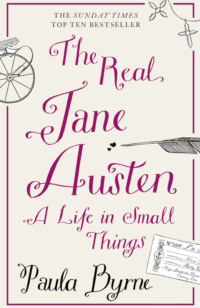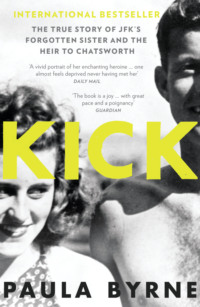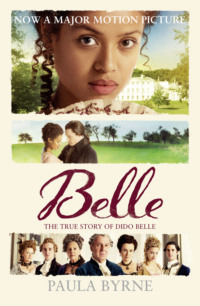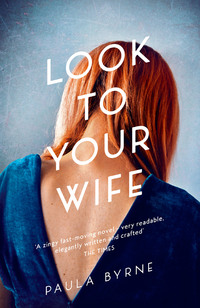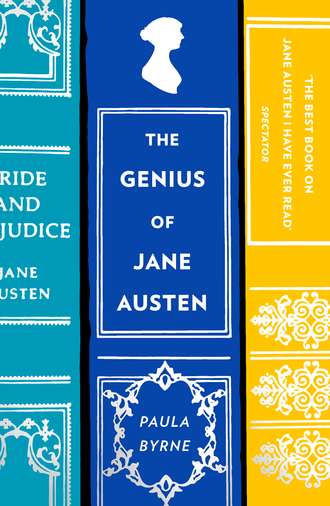
Полная версия
The Genius of Jane Austen: Her Love of Theatre and Why She Is a Hit in Hollywood
Neverthless, in spite of a cold, she joined the party to see Stephens as Mrs Cornflower in Charles Dibdin’s The Farmer’s Wife, a role created for her musical ability and her talent in low comedy:
Well, we went to the Play again last night … The Farmer’s Wife is a musical thing in 3 acts, & as Edward was steady in not staying for anything more, we were at home before 10 – Fanny and Mr J. P. are delighted with Miss S. & her merit in singing is I dare say very great; that she gave me no pleasure is no reflection upon her, nor I hope upon myself being what Nature made me on that article. All that I am sensible of in Miss S. is, a pleasing person & no skill in acting. We had Mathews, Liston and Emery: of course some amusement. (Letters, p. 261)
Though disappointed with Stephens, she enjoyed the performances of Mathews, Liston and Emery, who were three of the great comedians of the day. Tall and skinny, Charles Mathews was noted for his brilliance as ‘officious valets and humorous old men’.45 His long-time friend and fellow-actor, the inimitable John Liston, often appeared alongside him.46
Liston (1776–1846) was the highest paid comedian of his time.47 Hazlitt described him as ‘the greatest comic genius who has appeared in our time’.48 He was noted for his bumpkin roles and humorous old men. Leigh Hunt observed that his ‘happiest performances are ignorant rustics … he passes from the simplest rustic to the most conceited pretender with undiminished easiness of attainment’.49 Liston’s grave and serious face added to the effect of his comedy, Lamb wrote: ‘There is one face of Farley, one of Knight, one (but what a one it is!) of Liston’.50 For Hazlitt, Liston had ‘more comic humour oozing out of his features and person than any other actor’.51 He was a particularly fine Baron Wildenhaim in Lovers’ Vows.
John Emery (1777–1822) also played in the same line of old gentlemen and rustics, and was compared to Liston: ‘If our two stage-rustics, Emery and Liston, are compared, it will be found that the former is more skilled in the habits and cunning of rusticity, and the latter in its simplicity and ignorance.’ But Hunt later claimed of Emery that, in playing the countrymen, the field was ‘exclusively and entirely his’.52 Hazlitt also observed that ‘in his line of rustic characters he is a perfect actor’.53
The Farmer’s Wife was a vehicle for the singing arts of Stephens and the comic talents of Mathews, Liston and Emery. It tells a rather tired tale of an innocent (Emma Cornflower) abducted by a debauched aristocrat (Sir Charles). Mathews plays a village apothecary, Dr Pother. Liston played a cunning London manservant to Sir Charles. This served as a comic contrast to Emery’s ignorant but good-hearted Yorkshireman, servant to Farmer Cornflower.54 The play’s comic juxtapositions of high and low characters drew on a convention long associated with the stage: the contrast between town and country, a theme that Austen had been working on in Mansfield Park.
Jane Austen’s blunt assertion that Stephens had ‘no skill in acting’ is refreshing and to the point, in an age distinguished by its over-elaborate encomiums of actors and their roles. Furthermore her remark reveals a strong and discerning voice, one that knows what ‘good hardened acting’ is, and isn’t, and is confident in its own critical judgement without being unduly influenced by the current favourite of the stage. After revealing the details of the previous night’s theatre to Cassandra, she wrote of plans for yet another excursion to Covent Garden to see Kean’s rival, Charles Mayne Young (1777–1856), acting in Richard III: ‘Prepare for a Play the very first evening. I rather think Covent Garden, to see Young in Richard’ (Letters, p. 261).
Young had been the leading tragedian of the London stage before Kean challenged his supremacy in 1814. Young was in the Kemble school of acting, and was noted for his heroic, dignified acting style, though he was often compared unfavourably with his predecessor Kemble: ‘His most striking fault, as a tragic actor, is a perpetual imitation of Mr Kemble.’55 He was often criticised for his lack of passion: ‘Mr Young never gives himself up to his feelings, but always relies upon his judgement – he never acts from the heart, but the head.’56 Leigh Hunt was lukewarm about his abilities, describing him as an actor of ‘elegant mediocrity’, and Hazlitt was even more disparaging, especially of Young’s Hamlet: ‘he declaims it very well, and rants it very well; but where is the expression of the feeling?’57 Since Cassandra was coming to London, and presumably accompanied her sister to see Young’s Richard, there is no letter describing Jane’s reaction to his rendering of the part. But the critical consensus was that the performance was not a success.
The opposition between the Kemble/Young and the Cooke/Kean school of acting was often couched as a conflict between reason and feeling, judgement and passion. It is striking that Austen, who is so often associated with ‘sense’ rather than ‘sensibility’, clearly admired Kean’s acting but seems to have had little enthusiasm for the Kemble school. Though she names most of the major stars of the London stage in her surviving letters, there is not a single mention of John Philip Kemble himself.
Jane Austen did see Young again, this time with the new acting sensation, Eliza O’Neill, who had made her triumphant debut a month earlier as Juliet and was heralded as the only tragedian worthy to take over the mantle of Sarah Siddons. Just as Drury Lane had been saved from the brink of financial ruin by the advent of Kean, so Covent Garden was desperate to bring forward its own star in reply.58 Byron refused to see O’Neill out of his loyalty to Kean and Drury Lane, and for fear that he would like her too much: ‘No I’m resolved to be un-“Oneiled”’.59 As with Kean’s debut earlier that year, audiences acclaimed O’Neill as a genius from the provinces; it was claimed that some spectators fainted under her spell.60
Jane Austen’s last known visit to the professional theatre took place late in 1814. She was as keen to see Covent Garden’s new star as she had been to see Kean, and on the night of 28 November Henry and Edward arranged for her to see Isabella, a tragedy adapted by Garrick from Thomas Southerne’s The Fatal Marriage: or The Innocent Adultery, in which O’Neill played the leading female role. Jane, writing to her niece Anna Lefroy, was disappointed with O’Neill’s performance:
We were all at the Play last night, to see Miss O’neal [sic] in Isabella. I do not think that she was quite equal to my expectation. I fancy I want something more than can be. Acting seldom satisfies me. I took two Pocket handkerchiefs, but had very little occasion for either. She is an elegant creature however & hugs Mr Younge [sic] delightfully. (Letters, p. 283)
She shows discernment in her rather cool response to O’Neill’s performance. Even O’Neill’s most ardent admirers admitted that she was less good in maternal parts, like Isabella, but was more suited to playing innocent young girls, such as the lovesick Juliet, and repentant fallen women, such as Jane Shore and Mrs Haller: ‘She could not represent maternal affection; her love was all the love of fire, youth and passion.’61
Isabella, the tragedy of a devoted wife and mother who is persuaded to marry again only to find her beloved husband is alive, was considered to be one of Siddons’s finest roles. She had established herself on the London stage with her performance in the part. O’Neill suffered from the inevitable comparisons drawn between the two women. Even Hazlitt, who admired O’Neill’s Isabella, thought it lacked Siddons’s grandeur and power: ‘Nothing can be more natural or more affecting than her noble conception of the part. But there is not that terrible reaction of mental power on the scene, which forms the perfection of tragedy, whether in acting or writing.’62 Oxberry’s biography described her performance in Isabella as ‘artificial’ and suggested that it ‘savoured strongly of adoption from the style of Kean’.63
Austen was clearly intimate enough with the theatre world to know about the nuances of O’Neill’s acting style. Her joking reference to her two pocket handkerchiefs alludes to O’Neill’s reputation as an actress of excessive sensibility whose magic was to ‘raise the sigh’ and who provoked tears rather than terror. O’Neill’s biographer observed that her ‘triumph, it has been justly said, is in tears’.64 For Hazlitt, O’Neill’s power lay in her extraordinary ability to draw sympathy from the audience. It was her ‘reaction’ to Romeo’s death that characterised her unique acting style: ‘In the silent expression of feeling, we have seldom witnessed anything finer.’65
The telling phrase ‘[she] hugs Mr Young delightfully’ suggests that there was a kind of intimate theatrical code between Austen and her niece. As they were both aware, coupled with O’Neill’s ability to elicit sympathy and tears was her reputation as a ‘hugging actress’. This appellation appears to have been given by Thomas Amyot, according to the testimony of Crabb Robinson’s diary: ‘Saw Miss O’Neill in Isabella. She was as Aymot well said, “a hugging actress”. Sensibility shown in grief and fondness was her forte, – her only talent.’66
The deleterious effects of excessive sensibility are a recurrent theme of Austen’s fiction from her earliest jokes in Love and Freindship to Sanditon. Her joke about O’Neill’s sensibility is shared not only with Anna but also with her other favoured niece Fanny Knight:
I just saw Mr Hayter at the Play, & think his face would please me on acquaintance. I was sorry he did not dine here. – It seemed rather odd to me to be in the Theatre, with nobody to watch for. I was quite composed myself, at leisure for all the agitation Isabella could raise. (Letters, p. 285)
Austen’s ironic remark, ‘It seemed rather odd to me to be in the Theatre, with nobody to watch for’, comically portrays herself in the role of the chaperone of her young nieces, guarding their exposure to excessive sensibility or ‘agitation’. Earlier, we saw her worrying about Fanny’s agitation on seeing Kean. As indicated, both Kean and O’Neill were reputed to have the power of making their audience faint under their spell. Towards the close of this letter, Austen makes a striking reference to the two most famous tragediennes of the age, and uses the ardent acting style of O’Neill to express the contrasting natures of her young nieces:
That puss Cassy, did not shew more pleasure in seeing me than her Sisters, but I expected no better; – she does not shine in the tender feelings. She will never be a Miss O’neal; – more in the Mrs Siddons line. (Letters, p. 287)
This passage, perhaps more than any other single reference to the theatre, is revelatory of Jane Austen’s intimacy with the late Georgian theatre. As she was clearly aware, one of the current debates in the theatre world was the contrasting acting styles of Mrs Siddons and Miss O’Neill. The latter’s ‘extreme natural sensibility’ was played off against the former’s classical nobility. For Hazlitt, Siddons was the embodiment of ‘high tragedy’, O’Neill of ‘instinctive sympathy’.67
O’Neill’s biographer, Charles Inigo Jones, complained of ‘the rather too invidious comparisons constantly kept up betwixt her and Mrs Siddons’, and yet proceeded to make his own comparisons, contrasting not only the acting styles of the two women but their physical attributes which, he believed, embodied their acting styles. Thus Siddons’s ‘grandeur and dignity are pictured in her appearance’, and O’Neill’s ‘excess of sensibility is predominant … and well pourtrayed in her countenance’.68
One of the best comparisons of the two tragedians is made in Oxberry’s memoir of O’Neill:
Miss O’Neill was a lovely ardent creature, with whose griefs we sympathized, and whose sorrows raised our pity. Mrs Siddons was a wonderful being, for whom we felt awe, veneration, and a more holy love … Miss O’Neill twined most upon our affections, but Mrs Siddons made an impression on our minds, that time never eradicated.69
Austen’s observations in the scanty correspondence that survives offer decisive, hitherto neglected, evidence of her deep familiarity with the theatre of Siddons and O’Neill. In addition, her manner of comparing social conduct to theatrical models such as her niece’s Siddons-like dignified behaviour denoting a lack of sensibility (‘the tender feelings’) betrays a striking propensity to view life through the spectacles of theatre.
In January 1801, Cassandra Austen was compelled to abandon a trip to London, where she had intended to visit the Opera House to see the celebrated comic actress Dora Jordan (1761–1816). Jane wrote to her: ‘You speak with such noble resignation of Mrs Jordan & the Opera House that it would be an insult to suppose consolation required’ (Letters, p. 71).
The King’s Theatre or Italian Opera House in the Haymarket had been built by Vanbrugh in 1705. The Opera House was destroyed by fire in 1789 and was rebuilt on a vast scale in 1791.70 On the opening night, Michael Kelly sang in The Haunted Tower and Dora Jordan performed in Kemble’s farce, The Pannel.71 In 1799 the interior of the Opera House was partly remodelled by Marinari, the principal scene painter at Drury Lane.72 Austen’s sympathy for Cassandra’s double disappointment was therefore equally distributed between seeing the new Opera House and seeing the great Mrs Jordan.
In 1801 Dora Jordan was at the height of her powers, and the star of Drury Lane. As Siddons was the Tragic Muse of the London stage, so Jordan was the Comic Muse.73 Hoppner’s portrait of Jordan as ‘The Comic Muse’ was a huge success at the Royal Academy in May 1786.74 Not even Jordan’s long-term liaison with the Duke of Clarence (to whom she bore ten children over a period of twenty years) could stem the tide of ‘Jordan-Mania’ that swept the country in the late eighteenth and early nineteenth centuries. Her image was everywhere: in the theatre, in theatrical engravings in print shop windows, and in the numerous caricatures by Gillray and Cruikshank. Sheet music of the songs that she sang at Drury Lane were sold on the streets.
Dora Jordan was unparalleled in comedy.75 She appealed to both the critics and the theatre-going public who flocked to see her. Coleridge, Byron, Hazlitt and Lamb were among her admirers.76 Hazlitt described her as ‘the child of nature, whose voice was a cordial to the heart, because it came from it … whose laugh was to drink nectar … who “talked far above singing” and whose singing was like the twang of Cupid’s bow’.77 Leigh Hunt also singled out her memorable laugh and melodious voice: ‘Mrs Jordan seems to speak with all her soul … her laughter is the happiest and most natural on the stage.’78
Jordan’s extensive range was unusual in an era during which actors tended to be restricted to specific kinds of role. She played genteel ladies, such as Lady Teazle and Widow Belmour, and romantic leads such as Lydia Languish and Kate Hardcastle. She was also famous for her ‘low’ roles, playing chambermaids, romps and hoydens to much acclaim. Miss Prue, Miss Hoyden, and Nell in The Devil to Pay were among her favourites. She was also famous for her ‘breeches roles’, playing the cross-dressed Hippolita, Harry Wildair, Rosalind, Viola, and Little Pickle in the farce The Spoilt Child. The theatre chronicler John Genest claimed that she ‘sported the best leg ever seen on the stage’.79
Jordan’s performance as the innocent country girl in Garrick’s adaptation of William Wycherley’s highly risqué Restoration comedy The Country Wife combined the role of a hoyden with a ‘breeches part’. She played the Country Girl for fifteen seasons at Drury Lane from 1785 to 1800. In one of the most memorable scenes, Peggy takes a walk in St James’s Park, disguised as a young boy, as her jealous guardian is determined to protect her from other men. In a letter of 1799, Austen uses the notion of the ‘Country Girl’ to express doubts about the behaviour of an acquaintance, Earle Harwood, who had married a woman of obscure birth:
I cannot help thinking from your account of Mrs E. H. [Earle Harwood] that Earle’s vanity has tempted him to invent the account of her former way of Life, that his triumph in securing her might be greater; – I dare say she was nothing but an innocent Country Girl in fact. (Letters, p. 48)
Austen’s instinctive and imaginative way of using stage characters as a point of reference in her letters, coupled with her habit of weaving in quotations from favourite plays, offers yet another striking example of the range and extent of her familiarity with the drama. She is viewing the world around her through the spectacles of theatre, and, simultanously, showing her awareness of the intricacies and nuances of the kinds of social stratification reflected in the drama. The invention of ‘Country Girl’ innocents out of low-born characters in order to reflect favourable light upon the inventor is precisely the kind of dubious behaviour that Austen fictionalises so adroitly in Emma.
The life of the low-born and illegitimate Dora Jordan echoed the theatre’s predilection for plays depicting social metamorphosis. From her humble, obscure origins, she had risen to be the mistress of a prince and a royal estate.80 Epilogues were written for Jordan with pointed reference to her private circumstances. In 1791, when the Duke was stepping up his courtship of Jordan, she played for her benefit an adaptation of Fletcher’s The Humorous Lieutenant called The Greek Slave: or The School for Cowards.81 Jordan played the part of a slave girl who is in love with a prince, and is eventually discovered to be of noble birth. The epilogue drew attention to her assumption of genteel roles, both on and off stage:
How Strange! methinks I hear a Critic say,
What, She the serious Heroine of the Play!
The Manager his want of Sense evinces
To pitch on Hoydens for the love of Princes!
To trick out Chambermaids in awkward pomp –
Horrid! to make a Princess of a Romp.82
The epilogue also drew attention to the fact that, while she was acclaimed for her ‘low’ parts, her roles in polite comedy were often condemned. It seems that Jordan, even among her admirers, was considered to be a ‘natural’ at low parts. Even her adoring biographer Boaden described her low parts as ‘natural … the genuine workings of nature within her’.83 Leigh Hunt believed that Jordan was at her best in low comedy, and declared that she was ‘all deficient in the lady’ and unable to bring off genteel roles because of her lack of ‘a certain graceful orderliness, an habitual subjection … of impulse of manner’, claiming, however, that ‘If Mrs Jordan were what she ought to be in the lady, we more than doubt whether she could be what she is in the boarding school-girl or the buxom woman’.84
Hunt’s remarks betray a consciousness about the ease with which actresses could play the lady on stage and cross social boundaries off stage. Perhaps this was because so many former actresses married into aristocratic circles. Famously, one of Mrs Jordan’s co-stars, Elizabeth Farren, quit the stage to marry the Earl of Derby.85 Catherine Stephens married the Earl of Essex and Miss O’Neill retired early to become Lady Wrixon Beecher. Jordan’s rise from illegitimate child-actor to royal mistress, crossing almost every social barrier, added an extra comic dimension to her role as Nell in Charles Coffey’s farce The Devil to Pay.
In 1814 Jane Austen saw Jordan in this play, in what was perhaps her most famous role, that of a timid cobbler’s wife who is magically transformed into an aristocratic society mistress.86 Jordan played the part of the downtrodden wife who makes a better wife to Sir John, and a kinder mistress to her servants, than the irascible Lady Loverule. Lady Loverule’s metamorphosis into the cobbler’s wife eventually brings about her moral transformation. The rough treatment she experiences at the hands of the cobbler is partially responsible for the change in her attitude towards her exalted position:
There’s nought but the devil
And this good strap
Could ever tame a scold.87
The comedy had long amused the public, who enjoyed seeing Jordan’s metamorphosis from rags into riches, just as she herself had been transformed, seemingly, by her liaison with the Duke of Clarence. Jordan was dubbed ‘Nell of Clarence’ by Horace Walpole, who intended a reference to her famous predecessor as royal theatrical mistress, Nell Gwynne.
By the time that Jane Austen saw The Devil to Pay in 1814, however, Jordan was separated from the duke and had returned to the stage.88 Austen declared herself ‘highly amused’ with the farce. She was in good company – Hazlitt described Jordan’s Nell as ‘heavenly’:
Her Nell … was right royal … Miss Kelly is a dexterous knowing chambermaid: Mrs Jordan had nothing dexterous or knowing about her. She was Cleopatra turned into an oyster-wench, without knowing that she was Cleopatra, or caring that she was an oyster-wench. An oyster-wench, such as she was, would have been equal to a Cleopatra; and an Antony would not have deserted her for the empire of the world!89
The Devil to Pay, the play that was so closely associated with Dora Jordan, exemplifies the drama’s obsession with the concept of social mobility, and its endless play on rank and manners. The metamorphosis of a timid country girl and a termagant wife and society mistress highlighted the same sort of class tensions initiated by the unprecedented success of Richardson’s Pamela. Goldsmith’s She Stoops to Conquer was another favourite eighteenth-century comedy that examined uneasy social stratifications by a series of ironic reversals.
It is striking, but perhaps not surprising, that Austen favoured comedies where social roles were turned topsy-turvy, such as Coffey’s The Devil to Pay, Townley’s High Life Below Stairs and Colman’s The Heir at Law.90 Such comedies were popular with a wide and varied audience. Theatre historians have shown how the need for public theatres to appeal to a socially diverse audience of box, pit and gallery led to a mixed programme of entertainment.91 The opposition between ‘high’ and ‘low’ became a perennial theme in eighteenth-century comedy, depicting the dramatic situations and comic scenes that arise when a person crosses the boundaries from low life to high, or vice-versa. The device of bringing together contrasting types, whereby different styles of action and language are attached to different classes and ironically juxtaposed, allowed the writer to exploit the comic potential of ‘high’ and ‘low’ life in Georgian England, and please the upper galleries as well as the pit.
Pleasing the upper galleries and the boxes was, however, only part of the intention. Writers for the theatre also knew that fashionable comedy was genteel, and that its audience was predominantly middle class; therefore farces that criticised aristocratic manners and poked fun at ‘low’ characters were particularly successful. The increasingly frequent appearance of wealthy merchants, sympathetically treated in the plays of the 1790s, has been ascribed to the development of ‘middle-class’ attitudes.92
Ever since the success of Gay’s Beggar’s Opera, writers for the stage had used low life as a means of satirising high. In Cowley’s Which is the Man? one of the ‘low’ characters duly exclaims: ‘He must be a Lord by his want of ceremony.’ In The Devil to Pay, Nell’s gentle manners and innate dignity reflect badly on Lady Loverule. In Pride and Prejudice, Austen was also to depict the moral defeat of a high-ranking aristocrat (another Lady Loverule?) by a young woman ‘of inferior birth … without family, connections, or fortune’ (PP, pp. 355–56). In Mansfield Park the rendition of Fanny’s ‘low’ family in Portsmouth exploits the dramatic situations and comic scenes resulting from a woman’s movement across the boundaries between high life and low. Yet, in the end, it is the lower-ranking Price children (William, Fanny and Susan) who turn out better than the high-bred Bertrams.93




